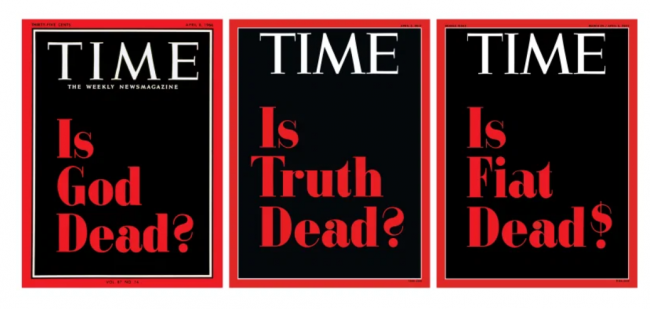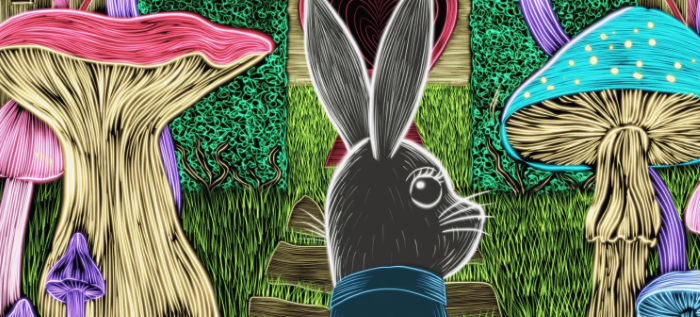When art curator and collector Sats Moon entered the world of crypto art 18 months ago, pieces were selling for a few hundred dollars.
Recently, however, we’ve seen the creator Beeple sell one piece consisting of 5,000 images, created over a 13-year period, for over $69 million. The opening bid for Beeple’s piece was $100.
“We went from bleeding edge to mainstream in a really short time,” Sats Moon said in an interview with Sidewalk Hustle from his home in Sydney, Australia.
“All of a sudden, here is a way that can empower creators, whether that’s musicians, artists, poets, filmmakers — whomever. This is an actual mechanic that delivers a direct royalty.”
The crypto art market is valued at over $100 million. Art is backed by digital tokens called non-fungible tokens (NFTs) that live on the blockchain. These tokens represent different assets.
NFT digital art is housed and traced differently than art found in galleries. The art is timestamped publicly on the blockchain to be used to vet and track the work. When buying, you need to use a digital wallet like MetaMask. You buy and sell using crypto, and then you also get a token that sits on the blockchain and is publicly verifiable. SuperRare, OpenSea, Nifty Gateway, MakersPlace, and Rarible are among the leading platforms in the crypto art ecosystem. Artists name their prices when selling their work.
The interest in NFTs and crypto art is coming from all over, including prestigious auction houses like Christie, which facilitated the Beeple sale, and started accepting cryptocurrency as payment in February. Music artist Grimes sold one art piece called “Death of the Old” for nearly $400,000, and DJ and producer 3LAU worked with Origin Protocol to sell the world’s first tokenized album. Digital comic artist Chris Torres sold a NFT of his “Nya Cat” for nearly $600,000. Dapper Labs, the same company that was behind the boom of CryptoKitties, partnered with the NBA to create a NFT and marketplace called NBA Top Shot. In March, NFLer Rob Gronkowski launched his own NFT collection of Super Bowl cards, making him the first professional athlete to enter the space with his own items.
Moon thinks a combination of Beeple’s rise to stardom combined with bitcoin’s recent bullish run created the perfect catalyst for crypto art to take off. Christie auction house reported that 91 percent of bidders on Beeple’s “Everydays: The First 5000 Days” were new buyers to Christie, with the bulk of them being millennials.
“The art has gotten better too,” Moon said. “The amount of people becoming exposed to Web3, Ethereum, and MetaMask created a perfect storm for people to be part of.”
Web3 is referred to as the next stage of the internet that’s currently being built because of peer-to-peer (P2P) technology and decentralized networks including Ethereum and Bitcoin.
“Plus, the NBA-Top Shot project, which runs on the Flow blockchain, offers crypto collectibles that have got a lot of attention,” Moon said.
For users, their OpenSea account tracks all the tokens in their wallet. Other tools like Etherscan show who owns what. Everything from decentralized wearables to decentralized names can be bought and sold. Articles and magazine covers too.

TIME is releasing three NFTs inspired by one of TIME’s most iconic covers: the “Is God Dead?” cover from April 8, 1966. Photo: TIME
From street art to music to crypto art
Sats Moon said he fell in love with street art while living in London in his early twenties. He remembers being exposed to artists like Invader and Banksy while walking through Soho. He would duck into early Banksy parties, including the “tiny” Santa Ghetto’s 2003 show in London which had work selling for 50 to 60 pounds.
A year later, Banksy started selling limited-edition screen prints out of a store called Pictures on Walls. Excited, Moon said he started paying anywhere from £150 and £400 to secure the pieces.
Over the next 10 years, and as Bansky exploded, Moon kept adding to his collection, which ended up including over 100 pieces. Prices for Banksy’s work went from hundreds to tens of thousands and Moon loved the idea that he “discovered his art early on while the rest of the world hadn’t,” he said.
But, after putting his collection into a storage unit in Sydney to move to Los Angeles, things went bad. In 2019, the whole storage facility went up in flames; 300 units were destroyed — including Moon’s. Moon flew back from Los Angeles to see the damage, even trying to break into the building, but he realized he lost it all.
“Art was a really big part of my life. I mean, I’d introduce myself at parties and be like ‘Ya, I collect cool stuff,’” he said, laughing.
“I was really depressed for a while. I thought about never collecting art again, because what’s the point?”
When the pandemic hit, Moon, who worked in music management, saw his job get wiped out. He made his money off live events and touring, which disappeared.
During this time, Moon said he started learning more about royalties, while also speaking to artists that were looking for new ways to get their art out. He became interested in the crypto art world after being introduced to Artnome, who Moon refers to as the “custodian of crypto art.” Seeing how non-fungible tokens were being used in this new marketplace felt right to him.
“All of a sudden the penny dropped and I was like, ‘oh, I can collect art, have art, travel with art, it’s protected, and artists get paid?’ I thought this was really good.”
Since it’s digital works, crypto art cannot be burned and would still be accessible thanks to the blockchain, which is unlike what happened with Moon’s burned collection that he will never see again.
After seeing the holes in the music industry when it comes to ticketing, royalties, publishing, and artist management, Moon saw the value in blockchain and NFTs. A blockchain assigns and verifies ownership to digital goods, while a non-fungible token proves a good’s authenticity by digitally attaching the artist’s signature to it.
“It answered so many questions around authenticity, transparency, accountability,” Moon said. “It’s a better system, and we’re tearing up the old rule book.”
Seeing that artists could get paid directly with royalties baked into the contract, Moon said it was no wonder so many artists flocked to the space when they realized the potential.
“You could buy work on SuperRare for one-eighth of what it is now,” Moon said.
While prices have surged, Moon said there may be a price bubble, so artworks could be selling for lower prices in the future — but that’s not the point, he said.
“The bigger picture is the ability for artists to monetize and sell themselves,” Moon said.
The crypto movement
Moon said he looks at crypto art in two ways:
First, there is a movement of artists, such as XCOPY, Robbie Barratt, Robness, Miss Al Simpson, and Max Osiris, who have been making art on the blockchain, digitally. These are crypto artists. Robbie Barratt is one of the first artists to mint his work to a NFT on the blockchain.
Second, there is the “idea of crypto art, which is making art and placing it on the blockchain,” Moon said. “I look at this as the ecosystem for NFTs.”
As a former music manager, Moon said there are a lot of artists that have been looking for ways to take themselves out of the label system and be independent but “can’t get through the gatekeeper called Spotify,” he said.
One of crypto art’s biggest concerns is that data mining comes with an environmental toll, but Moon said the “new upgrades coming to Ethereum, which are due within the next couple of months, will see mining reduced.” There are also different blockchains that have different mining patterns.
“If you look at Flow, which is what the NBA Top Shot project sits on, it’s a more centralized blockchain so you have less of the mining issue,” Moon said.
Gryphon Digital Mining is one company that’s mining bitcoin with renewable energy to address environmental impact.
‘Future Art’
Moon first thought crypto art may see a similar boom to bitcoin. He didn’t expect the velocity of transactions that happened over weeks. He wanted to do more himself.
Moon launched Future Art, the three-day immersive festival in January. The sold-out event featured 40 artists. The second installment called “Follow the White Rabbit” takes place Easter Weekend and features a select 20 artists. Moon hopes to bring in a couple hundred people a night.
“For a lot of these artists, this is the first time they’ve seen their work on a 40-foot screen. We’ve got massive projectors, installations — like big tunnels, and a mixture of AR, VR, and digital display frames,” Moon said.
Butters, Murat Kilic, and Dave Goode are among the DJs slated to perform.
“We are bringing an array of cutting-edge digital art, while exploring new ways to incorporate VR storytelling into an event,” Moon said. “We’re trying to create at the intersection of music and immersive tech.”
The plan is to host another event in August followed by an event in London at the end of the year. In 2022, Moon wants to take Future Art on a 10-city tour across North America.
“It’s really about bringing the art forward into the headline,” Moon said. “People are coming to Future Art just like they went to festivals to see their favourite DJs like Calvin Harris.”
Some of the artists participating in Future Art include Jon Noorlander, Carlos Marcial, Daniella Doodles, Xibot, and Spaced Painter.
Moon doesn’t think NFTs are here to replace physical art, rather, NFTs are a “complementary way of enjoying art that’s digital,” he said.
Main photo: Future Art/ Daniella Doodles
